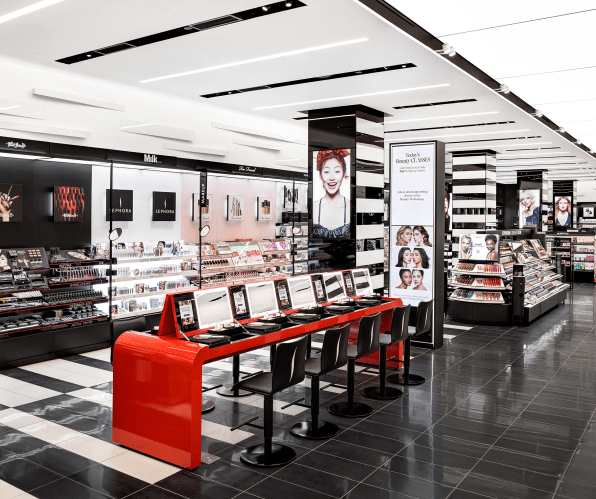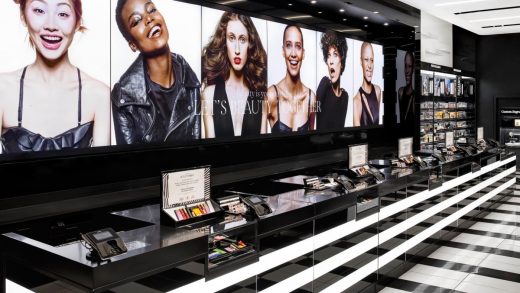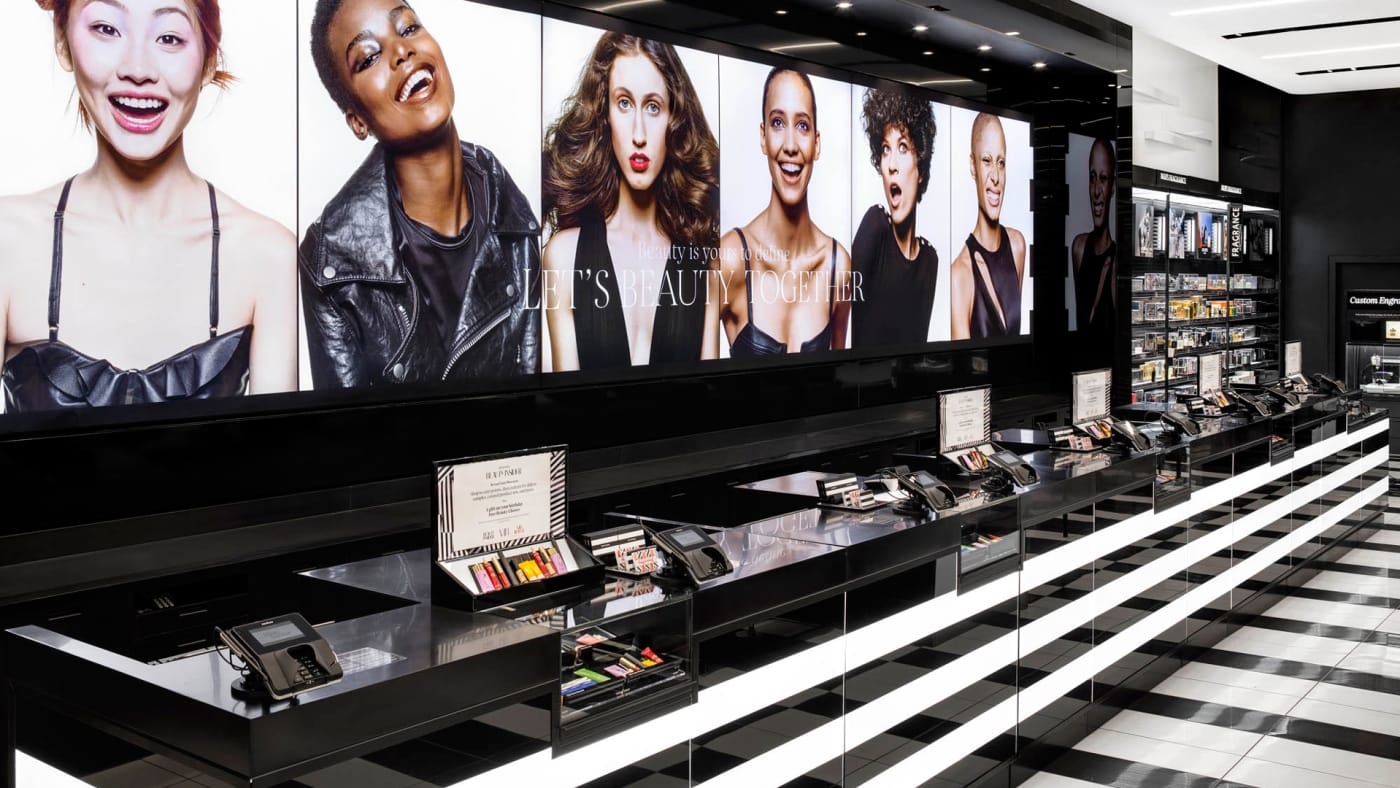From Sephora to Barney’s, retailers bet on the nebulous wellness industry
Take a look at the “Wellness” section on Anthropologie’s website and you’ll find aromatherapy pendants, beauty elixirs, and even crystal-filtered water bottles. “Each stone blend enhances your water with specific energetic benefits,” reads the description for a $98 gemstone water container. In total, there are nearly 450 “wellness” products for sale on anthropologie.com. That’s even more than the bohemian retailer’s beloved shoe department, which offers about 300 products for sale.
Anthropologie certainly isn’t the only fashion company moving aggressively into the “wellness” space. Numerous retailers–Neiman Marcus, Urban Outfitters, Madewell, Nordstrom, and most recently Barney’s–aim to partake in the $3.7 trillion “health and wellness” juggernaut. Of that, the Global Wellness Institute estimates that “beauty” has a $999 billion industry footprint.
And while health enthusiasts may be accustomed to picking up not only lipsticks but also bath products at Sephora, these days the beauty chain’s stores are flush with luxe tooth floss, natural deodorants, and $38 collagen-enhancing beauty supplements. The beauty category increasingly expands to include new products, including “wellness” and “health” products more commonly associated with GNC–or even Goop.

Artemis Patrick, chief merchandising officer of Sephora USA, Inc. says the cosmetics chain tries to keep up with trends and help consumers “discover brands and products that they couldn’t find elsewhere on their own.” Sephora’s in-store and digital experience wants to offer customers an element of discovery–and sometimes that entails offering a rose quartz roller ball applicator that imbues users with “the vibration of love”.
“Our clients are eager to discover and play in [the wellness] category,” says Patrick, noting that the retailer plans to expand its offerings in this space. Customers, Patrick says, are “looking for beauty products that help them achieve their wellness goals.” Case in point: brands such as Miranda Kerr’s organic Kora Cosmetics have quickly become Sephora bestsellers.
Just this month, Sephora announced its Clean Beauty category, a curated space “free of” ingredients such as sulfates, parabens, formaldehyde, and other pro-wellness no-nos. There are already 50 brands partners participating in Sephora’s Clean Beauty section.
As Americans become more health conscious, retailers are eager to cater to their desires however possible, explains Bahar Takhtehchian, beauty expert and founder of BaharTak.com: “These brands are trying to tap into every aspect of people’s lives as much as they can.”
Today’s consumer is far more informed and therefore plays a far bigger role in dictating the nature of new products. That shift is changing how retailers position and market themselves. “[Shoppers] are reading labels carefully,” says Takhtehchian. “This is just an extension of everybody wanting to live a healthier life in general.”
During the last decade, the fashion and beauty industries have eagerly adopted natural and organic skincare brands that tout better-for-you ingredients. In the beauty industry, the term “wellness” stresses empowerment, that women can take control of how they feel. The idea is that–much like what women eat or how they exercise–what women choose to put in and on their bodies can affect their well-being.
In a 2017 report, the NPD Group found that nearly half of female U.S. shoppers actively seek natural or organic ingredients in their products, and prefer items free of chemical ingredients such as parabens, phthalates, and sulfates. Prestige skincare brands that promote wellness grew sales by 13% last year–outpacing the overall market, which grew by 6%.
But as the category shifts well beyond traditional beauty products like moisturizer and lipstick, retailers often struggle to answer: What exactly is wellness? And how do you best capitalize on it? As Patrick notes, for some companies, wellness refers to internal treatments (beauty from within, as industry folks say)–a supplement or a gut health tonic. For other businesses, wellness products are topical or perhaps more aesthetic–a calming moisturizer, a crystal that claims to offer healing benefits. For an increasing number of overstressed, digitally-connected women, wellness is simply about making themselves feel good–with a hot bath, for example.
Like other companies, online beauty subscription box provider and brick-and-mortar retailer Birchbox is attempting to navigate the wellness gold rush. In the last year, the New York-based startup witnessed a significant sales uptick in Korean beauty ritual products, such as face masks and nutritional supplements. During the holiday season, Birchbox launched a bath set that quickly became the fastest selling kit on the site.
“Wellness is such as a weird, amorphous tag,” concedes Jamie Johns, Birchbox director of merchandising. “Even having a skincare routine is a form of self-care and wellness.” She sees consumers developing wellness habits inspired by trends and information they spot online and on popular social media accounts.
It is why, when you are shopping for makeup, you’ll spot products you might not automatically associate with beauty. Vitruvi, for example, is a modern aromatherapy and essential oils company that completed the Sephora accelerator program in 2017. The brand’s luxe reimagining of the age-old aromatherapy ritual features sleek ceramic diffusers and vials stamped with chic, minimalist lettering.
The three-year-old company, says Vitruvi cofounder Sara Panton, wants to help women carve out solo time and transform their home into a relaxing oasis. “We provide a 30-second spa moment throughout the day,” says Panton. For many retailers, including Sephora, Goop, and Madewell, Vitruvi is the first essential oils company they have carried. It is now carried by over 300 retailers.
“Companies are just trying to target multiple facets of people’s lives,” says Takhtehchian. “[Beauty] is not just for the sake of vanity anymore. Companies are trying to provide an additional benefit to the consumers.”
Much of what gets categorized by this industry as wellness is a matter of branding. The messaging around certain products–like say, pushing an appealing ritual–is what easily separates a relaxing face mask from just some cold guck you smear on your face. The Pursoma Digital Detox bath, for example, reimagines a soak in the tub for the modern working woman. “This digital wellness ritual helps you reduce the poor quality sleep, tension, and stress that often result from overuse of technology,” the Pursoma website proclaims. “Prepare for a hard reset and reinstall of your body’s operating system!” It is now carried in over 200 stores, including Nordstrom, Goop, and Anthropologie.
Many independent beauty brands target an emotional, physical, or psychological need that is often ignored by bigger conglomerates. They appeal to shoppers who are “fed up with what traditional big guys have been selling them for a long time,” says Karen Ballouof, cofounder and CEO Immunocologie, a nontoxic, organic skincare brand available at QVC and Harrods. The clean beauty entrepreneur sees a wide swath of shoppers–many of them millennials–who are attracted to “authentic” brands that embody their values and lifestyle.
Millennials, who put a premium on health and experiences, spend less on clothing and more on products that could potentially affect their overall well-being. Fashion retailers have no choice but to embrace the change. Companies like Lucky or Free People–better known for jeans than crystal facial rollers–are looking for new ways to get people in the door. If that requires selling “wellness” products, so be it.
“As wellness brands gain market share in the overall market, retailers are both catering to consumer demand and attempting to bring more excitement to their beauty floors to attract new consumers,” says Larissa Jensen, beauty industry analyst at The NPD Group, in an email.
Consumers have responded kindly, catapulting under-the-radar wellness brands into mainstream success. Ingestible beauty line HUM Nutrition tripled retailer expansion in 2017 and saw a 30% sales growth over the last 12 quarters with partners such as Nordstrom. A brand representative confirms the line will be in every Sephora by the end of the year. Moon Juice, a line of “adaptogenic” powdered blends found at retailers such as Barney’s, doubled the number of stores where it’s sold to 400 this year–and plans to add another 400 in 2018.
As more brands enter this competitive space–and retailers attempt to seize on consumer shopping trends–the beauty wellness category is expected to grow exponentially in the coming years. Healthy-leaning trends will continue to transform the beauty landscape, says Jensen, because consumers can’t “unlearn” what they now know about ingredients. They also likely won’t forfeit all the enjoyable self-care habits they are coming to rely on. Beauty’s “wellness” category is here to stay, and that means more stores will follow suit with their own crystal water bottles and bespoke vitamins.
“I wouldn’t call it a trend,” argues Ballouof. “I don’t see us ever going ever going back.”
Fast Company , Read Full Story
(17)



